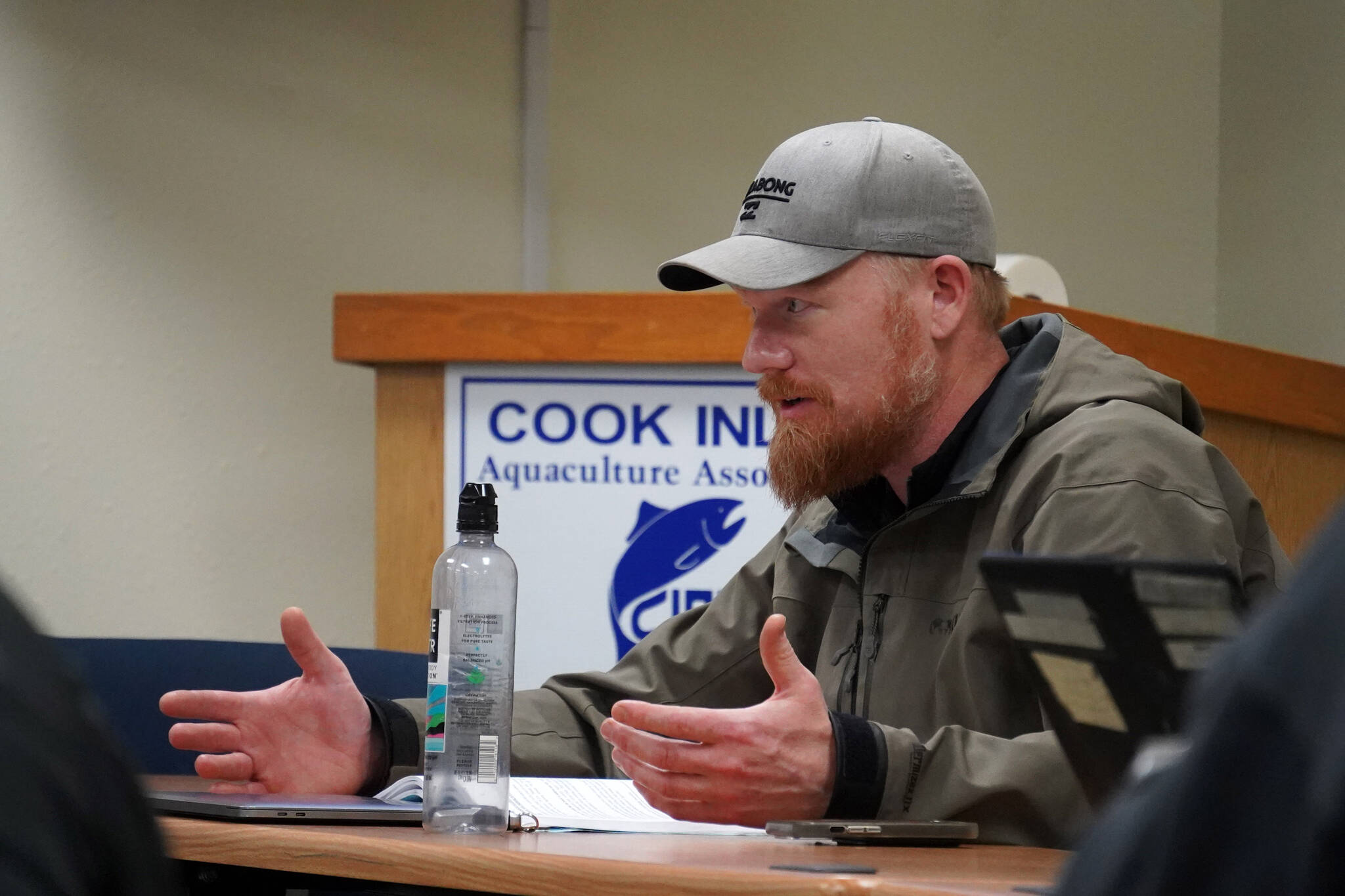In their third week talking proposals centering on the Kenai River Late-run King Salmon Management Plan, the Kenai/Soldotna Fish and Game Advisory Committee last Monday, Jan. 22, placed their support behind two proposals that would modify allowable gear for the east side setnet fishery and a third that would remove hour and gear exemptions from the 600-foot fishery.
The meeting was among a series of meetings by the local group to set recommendations on nearly 200 proposals to the State Board of Fisheries ahead of the Upper Cook Inlet Finfish meeting scheduled for late this month. The committee’s recommendations will be weighed by the board alongside public comment as they deliberate on changes to fishing regulations.
The first proposal supported by the group was submitted by Joseph Person and would allow commercial setnet anglers to use up to three set gillnets shorter than 35 fathoms in length and no longer than 70 fathoms in total length when the fishery is operating under restrictions in the late-run Kenai River king salmon management plan.
Todd Smith, who sits in a commercial setnet seat on the committee, said that the goal of the proposal is to allow more flexibility but that “the total length of gear in the water isn’t any different.” Instead of fishing, for example, two nets that are 35 fathoms long, an angler could fish three that are 20 fathoms long.
Smith said that shifting gear and the setup on his site would require a lot of effort — “I wouldn’t” — but supported the proposal to allow flexibility for anglers with different setups.
The proposal was supported with 10 in favor and three abstentions.
Also supported was a proposal by Chris Little that would allow commercial anglers to use dipnets in the local fisheries. Specifically, the proposal reads that when restrictions for king salmon fishing are implemented, commercial fishing permit holders can harvest sockeye within 600 feet of the mean high tide mark from shore or from boats less than 25 feet in length.
The proposal was supported with eight in favor and four opposed — the opposition including all the committee’s present commercial fishing representatives.
Smith, who voted in opposition, said that the workload to turn a profit would be constant, requiring lots of crew.
“I think its silly,” he said.
The group poked at certain restrictions in the proposal, like restricting vessels to only two nets and a maximum length, but supported the proposal as written.
Lisa Gabriel, who also voted in opposition and sits in a commercial fishing alternate seat, said that the density of salmon isn’t high enough for the gear type to be practical on most people’s fish sites.
“I don’t like the precedence,” she said. “If you want to harvest sockeye, you use a set net.”
The final proposal supported on Monday, by the Kenai River Professional Guide Association, would remove certain exemptions for “the 600-foot commercial set gillnet fishery,” which describes set gillnet commercial anglers in the Upper Subdistrict who fish within 600 feet of the mean high tide mark. That fishery in existing regulation is exempt from hour and gear limitations — the proposal would see that exemption removed.
Monte Roberts, who voted in favor and sits in a sport fishing guide seat, said that he wanted to see controls implemented that match other elements of the commercial fishery.
“It should just be one more tool,” he said. “We want it to be accounted for.”
Smith voted in opposition and said that as the commercial fishery deals with restrictions prompted by low king salmon abundance, pulling the fishery back to the beach makes the most sense for allowing opportunity — “my frustration is we haven’t used it enough.”
The proposal was supported with seven in favor, five opposed and an abstention.
There were several proposals to which the group voted in opposition. For the commercial fisheries, those proposals included exempting the East Forelands area from paired restrictions; using longer, shallower nets in the commercial setnet fishery; restricting the east side setnet fishery to flagged nets only; and several proposals seeking restricted commercial fishing opportunity below the optimal escapement goal for large late-run Kenai River king salmon.
The group also opposed several proposals that would either modify existing or create new escapement goals for Kenai River late-run sockeye salmon to respond for high escapements in recent years — for example, a preliminary department count of 2.3 million sockeye in 2023 far exceeding the sustainable escapement goal of 750,000-1.3 million.
Finally, the group voted in opposition to three proposals centering on the Kasilof River. The first two sought harvest opportunity in the Kasilof Special Harvest Area, while the third would reduce the escapement goal for Kasilof River sockeye salmon.
The committee will convene for another meeting on Board of Fisheries proposals Monday, Feb. 12, at 6:30 p.m. in the Cook Inlet Aquaculture Association on Kalifornsky Beach Road. Meetings are open to the public and public comment is encouraged by the committee.
For more information about the committee or the boards process, visit adfg.alaska.gov and look under “Regulations.”
Reach reporter Jake Dye at jacob.dye@peninsulaclarion.com.


